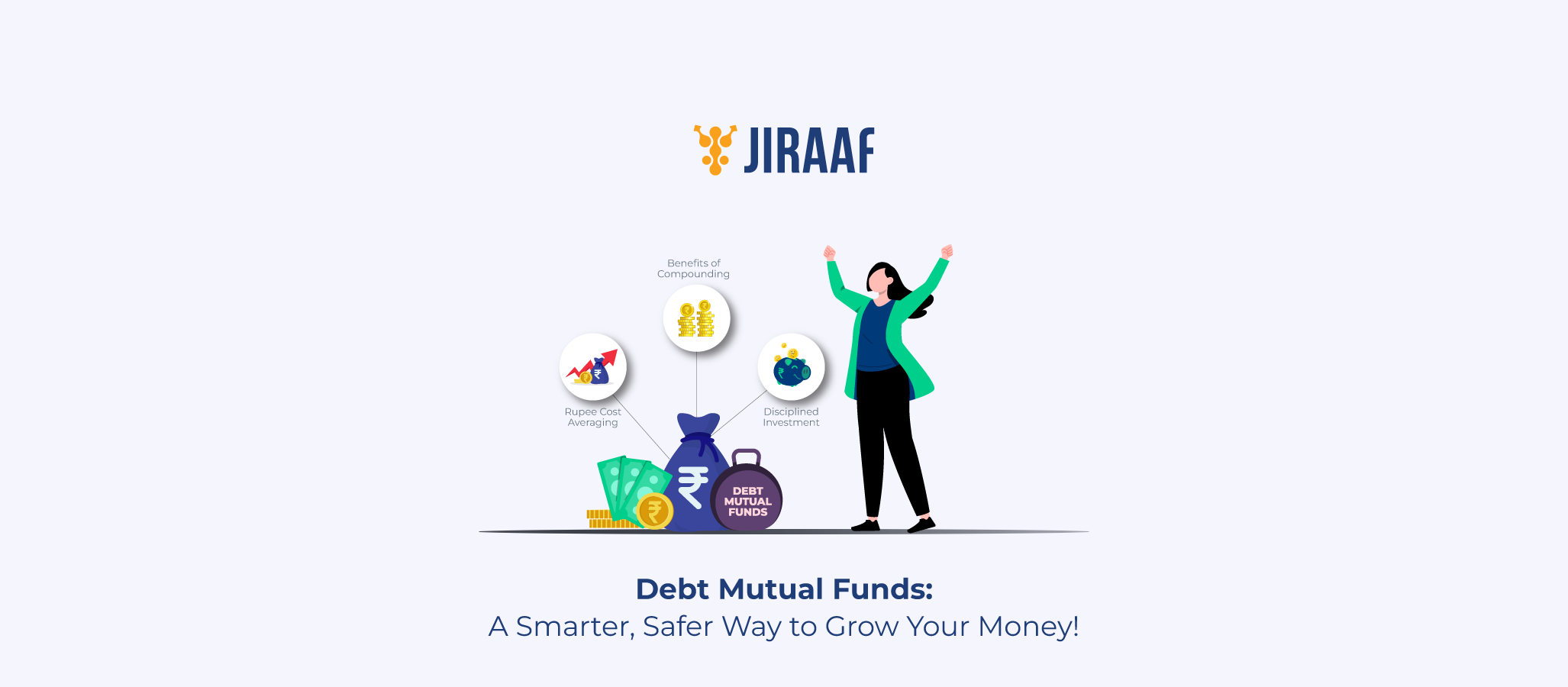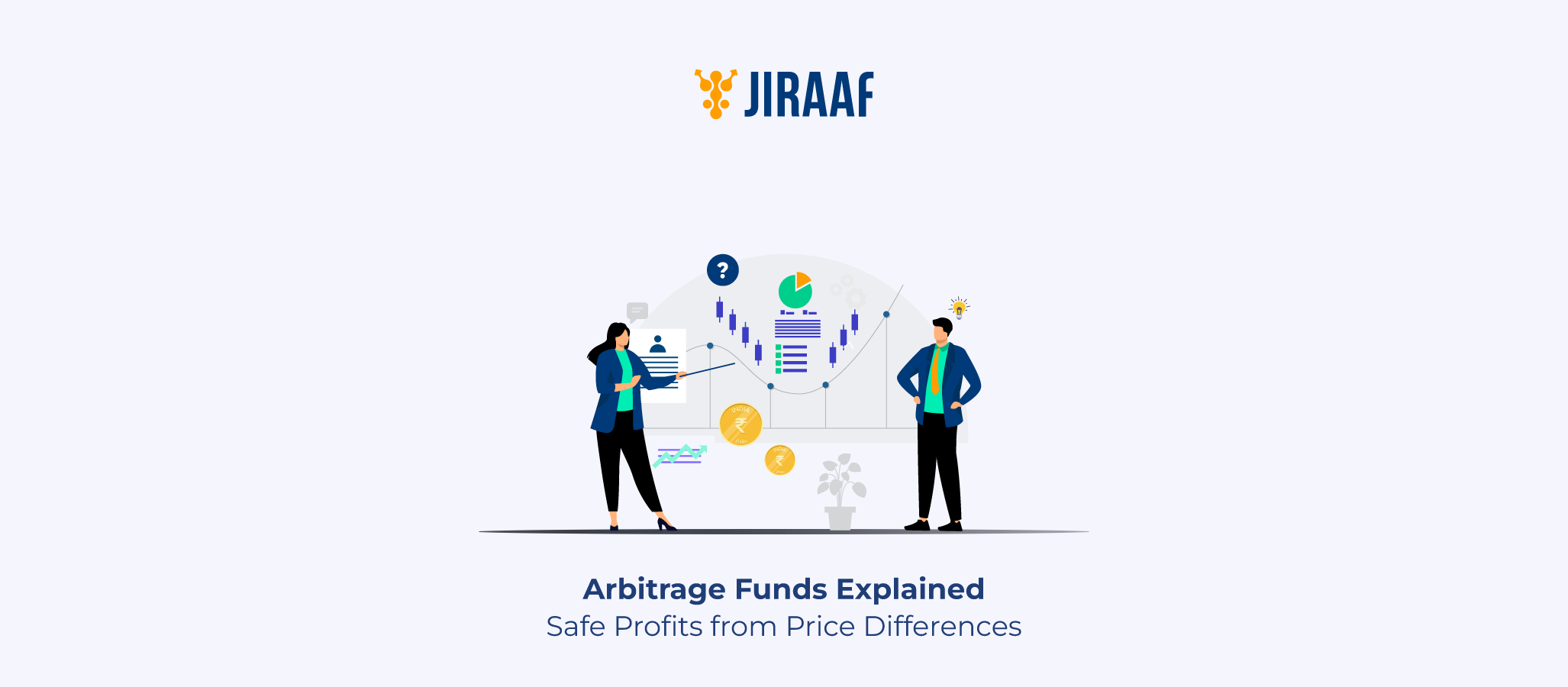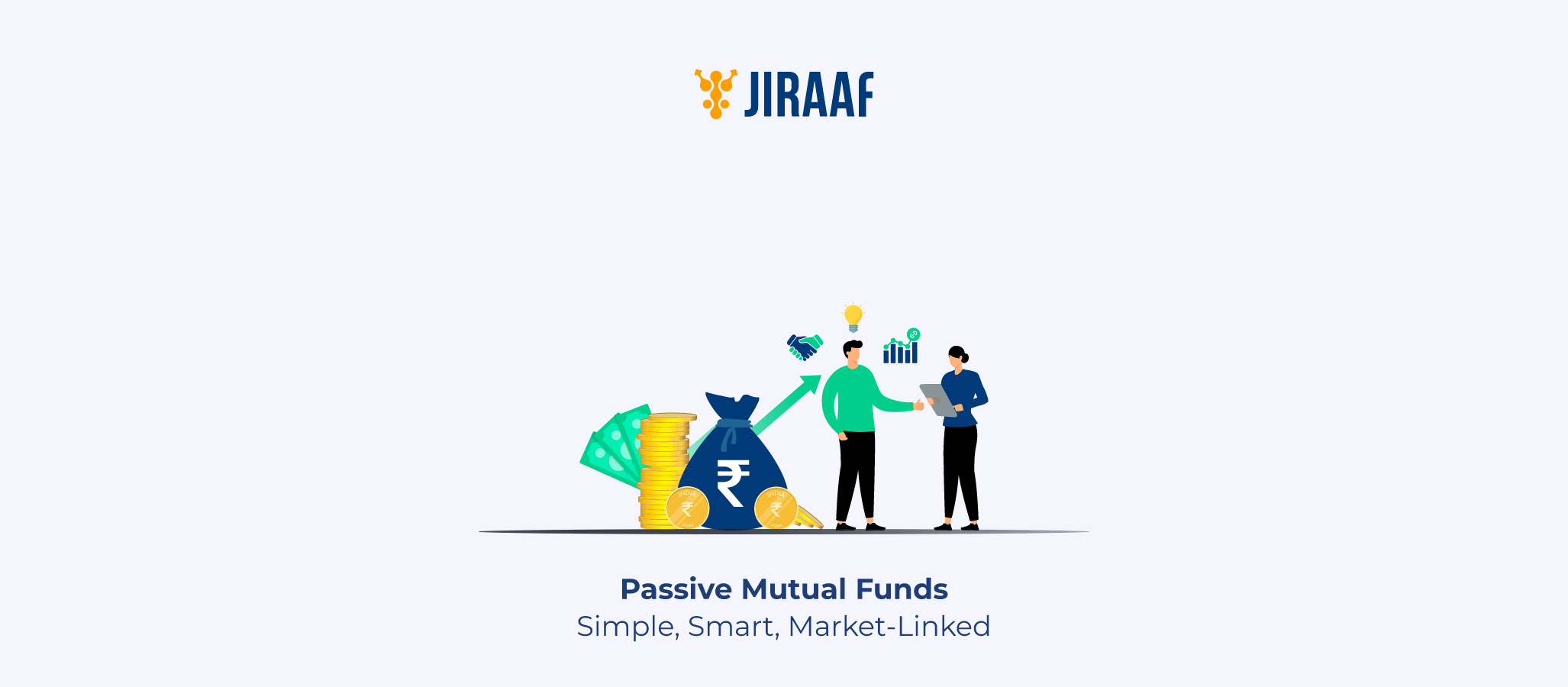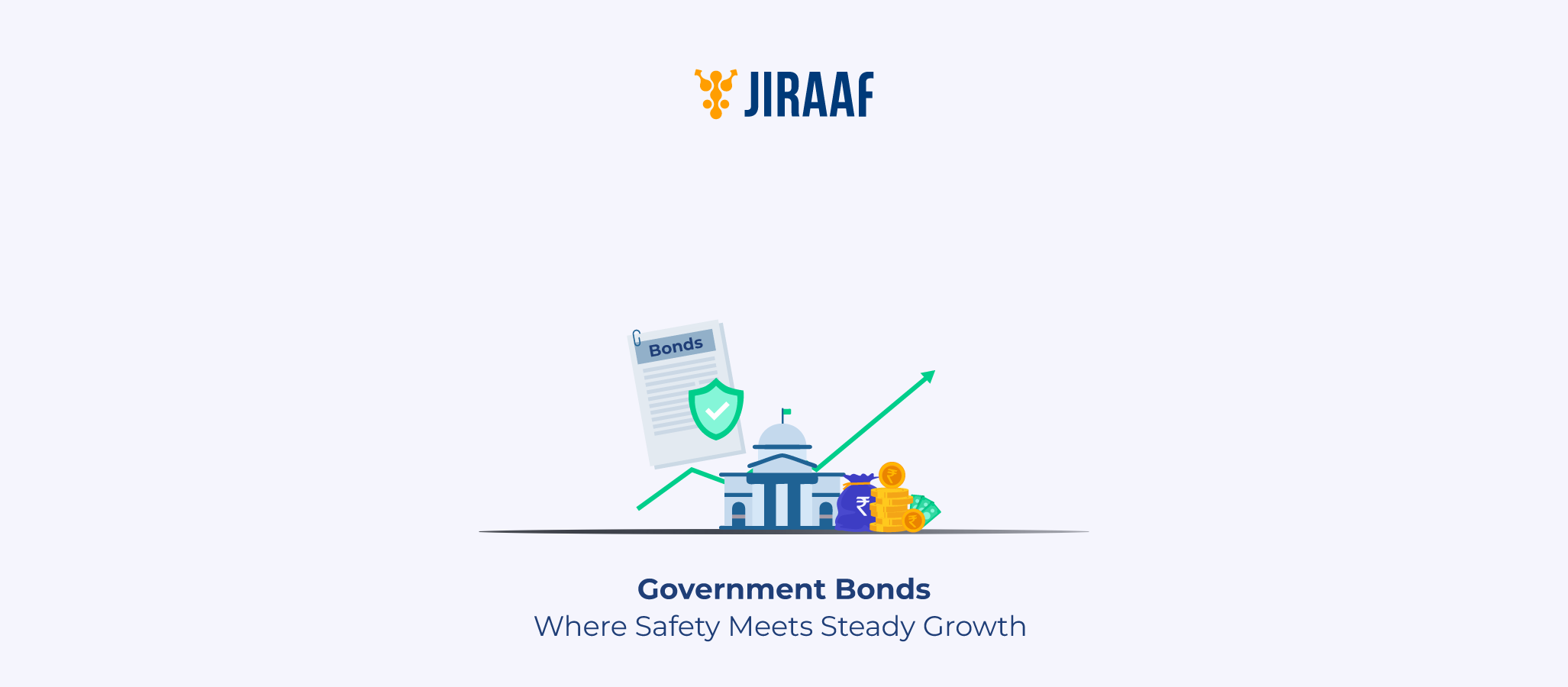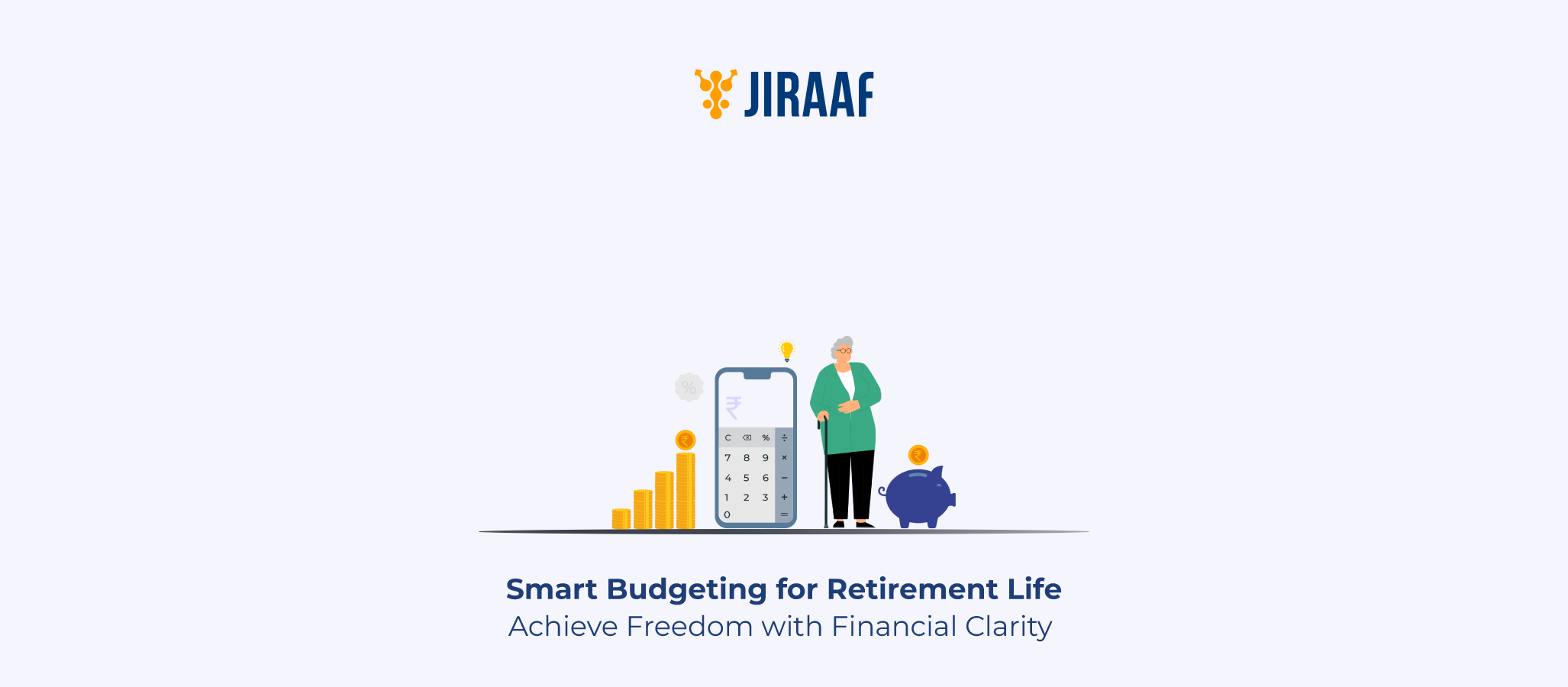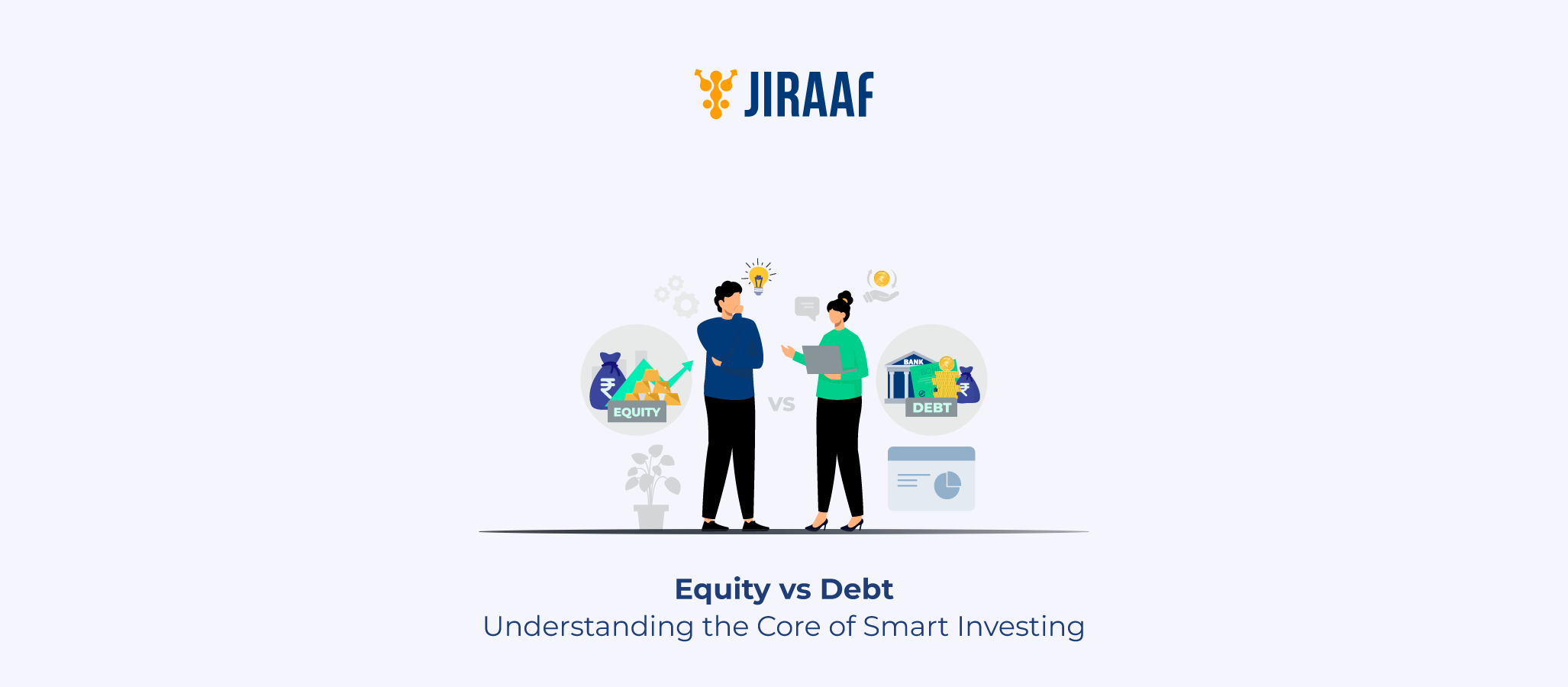If you’re exploring investment options that offer stability without locking your money away for years, debt mutual funds deserve your attention.
These funds primarily invest in fixed-income instruments like government securities, corporate bonds, and treasury bills, without exposing your capital to the volatility of equity markets.
What makes debt mutual funds truly compelling is their versatility. Whether you’re building an emergency fund, saving for short-term goals, or looking to diversify an aggressive portfolio, there’s likely a debt fund suited to your needs. But the catch? Not all debt funds are low-risk, and choosing the wrong one can cost you returns—or even capital.
In this blog, you’ll discover how debt mutual funds work, the different types available, the tax implications, and how to decide whether they deserve a place in your portfolio. By the end, you’ll have the clarity you need to make smarter, goal-aligned investment decisions. Let’s get started.
What Is a Debt Mutual Fund?
A debt mutual fund is like a financial matchmaking service where your money gets introduced to various fixed-income securities such as bonds, treasury bills, commercial papers, and other instruments that are considered “low risk” and provide you “stable returns”.
Basically, you lend your money to companies, banks, or the government, and in return, you get interest. The mutual fund does all the behind-the-scenes work for you—buying, managing, and rotating these investments so you don’t have to.
So, instead of putting ₹1 lakh in a bank FD and earning, say, 6% annually, a debt mutual fund might take your money and spread it across 20 such instruments, some yielding 8%, others 6%, and possibly getting you better returns than what you would get if your investments were concentrated in any one instrument.
Types of Debt Mutual Funds
Just like there are different kinds of pizzas, debt mutual funds come in various flavors, and each one is tailored to suit your appetite for returns, risk, and investment horizon.
Short-term Debt Funds
If you’re not looking for a long-term commitment and just want to park your money somewhere for a few months, short-term debt funds are the way to go.
They invest in instruments with shorter maturity periods, which means lower interest rate risk and relatively stable returns for you; apt if you’re saving up for an upcoming vacation or any obligations you need to meet in the near future.
Long-term Debt Funds
Now, if you’ve got a little more patience, long-term debt funds might be the fit for your portfolio. They invest in instruments with longer durations—think 5 years, 10 years, or sometimes even more.
Sure, they come with a bit more interest rate volatility, but if you ride out the ups and downs and hold them till maturity, you could potentially earn more than short-term funds. Perfect for your major milestones such as building your child’s future college fund or saving up for that dream home.
Liquid Funds
Liquid funds are where you park your cash when you need super quick access to it. They invest in instruments that mature in 91 days or less. Although, the returns aren’t sky-high, the safety and liquidity are what make them hard to ignore!
Let’s say you have ₹1,00,000 sitting idle in your savings account earning around 3% interest per year. If you move that money to a liquid mutual fund, it could earn around 6–7% annually—more than double the returns—and still be available to withdraw in just 1 working day if you need it. So, your money works harder without being locked away.
Credit Risk Funds
Feeling a little adventurous?
Credit risk funds go for higher-yielding instruments, even if those come with a teeny bit more risk (like lending to comparatively smaller companies). The idea is that by taking on a bit more credit risk, you can earn better returns. These higher-risk higher-return products can occupy some weightage in your portfolio, depending on your risk profile.
Taxation on Debt Mutual Funds in India
The rules changed on April 1, 2023, and now debt mutual funds are no longer eligible for long-term capital gains tax benefits. So now, gains are taxed as per your income slab, no matter how long you stay invested.
Let’s break it down with an example:
You invest ₹1 lakh.
You withdraw it after 3 years with a ₹20,000 profit.
If you fall under the 30% tax slab, you will have to pay ₹6,000 in taxes. Which means your net profit would be ₹14,000.
It’s not the happiest news, but hey, it still often beats the post-tax returns of an FD, especially if you fall under a lower tax slab.
Benefits of Debt Mutual Funds
More Returns Than Savings Accounts & FDs
Debt funds can often beat FD rate of returns—especially in a low-interest-rate environment. So, you get the potential upside of earning more interest on your money compared to FDs without locking in your money.
Liquidity
Most debt mutual funds let you exit anytime, sometimes with zero exit load, so you’re not stuck till maturity. On the other hand, if you exit your FDs prematurely, you must pay a penalty as per the terms of your bank.
Diversification
Instead of lending to one company, you lend to many—spreading your risk. Even if one defaults, it’s not a total disaster.
SIP-friendly
You don’t need a huge sum to start. Begin with ₹500 or ₹1,000 and invest monthly. Before you know it, you’re building wealth slowly and steadily.
Risks & Limitations to Consider
Interest Rate Risk
When interest rates rise, bond prices fall. It’s like a seesaw. If you’re in a long-term debt fund during a rate hike cycle, your returns might dip temporarily. Seems confusing, right? Our blog on bond yields would help you understand about this phenomenon in much more depth!
Credit Risk
Remember credit risk funds? If the company you “lent” to defaults, your investments could take a hit. The chances of this happening are rare, but not zero.
Tax Inefficiency (Post-2023)
The new taxation rules mean you might end up paying more tax than before, especially if you’re in a higher income bracket.
Returns Not Guaranteed
This isn’t a fixed deposit. While historical returns might look stable, nothing is guaranteed. So, invest at your own discretion after understanding the instrument in detail.
Debt Mutual Funds vs Other Investment Options
| Feature | Debt Mutual Funds | Fixed Deposits | Equity Mutual Funds |
| Returns | Moderate, market-linked | Fixed, low to moderate | Potentially high, market-dependent |
| Risk | Low to moderate | Very low | Moderate to high |
| Liquidity | High (except some funds with exit loads) | Medium (premature withdrawal penalties) | High (subject to market conditions) |
| Taxation | As per income slab | As per income slab | LTCG at 10% after 1 year (above ₹1 lakh) |
| Investment Horizon | Short- to medium term | Fixed tenure (depends on FD chosen) | Long term (5+ years recommended) |
| Ideal For | Conservative to moderate investors | Extremely risk-averse investors | Growth-focused investors |
| Professional Management | Yes | No | Yes |
How to Choose the Right Debt Fund
Not all funds are created equal. Here’s how you pick the one that matches your goals:
1. Match it with Your Time Horizon
- Need some place for your emergency fund? Liquid funds might be the way to go. Imagine you’ve just received your annual bonus of ₹100,000 but won’t need it for the next two months. Instead of letting it sit idle in your bank account, you park it in a liquid fund. Over those two months, your money earns better returns—without market volatility—and you can still pull it out quickly if there’s an emergency. It’s like a smart savings account with a boost!
- Saving for a duration of 2-3 years? A short-term fund would be much more appropriate for you.Let’s say you’re planning to buy a car in the next 2–3 years and have ₹3 lakhs set aside. Instead of keeping it in a fixed deposit or savings account, you invest in a short-term debt mutual fund. It offers better returns than a bank FD, has lower interest rate risk than long-term funds, and keeps your money relatively safe and accessible when you’re ready to make that down payment.
- Investing your hard-earned money for the long haul? Long-duration funds could be a good fit for you. Suppose you’re planning to buy a house or fund your child’s education 7–10 years from now. You invest ₹5 lakhs in a long-term debt fund instead of locking it in traditional instruments. Over time, these funds benefit from compounding, higher interest accrual, and potentially better post-tax returns, especially if held beyond 3 years—thanks to indexation (the gains are adjusted for inflation before being taxed) benefits on long-term capital gains. It’s smart growth with relative stability.
2. Understand the Risk Profile
If words like “default” and “volatility” give you sleepless nights, skip credit risk funds. Stick to safer ones with high-quality papers (AAA rated, government-backed, etc.).
3. Look at Past Performance
Yes, past performance matters—but it’s not everything. Focus on the fund manager, his background, style of investing, and how the fund handled market volatility. Once you’re convinced it is the right fit for you, only then should you invest in it.
4. Check Expense Ratio
You’re paying for management—don’t overpay. A lower expense ratio is better for your returns, especially if you’re looking to invest for the long haul. A high expense ratio combined with the power of compounding can make a significant dent in your corpus without you even noticing.
5. Read the Factsheet
Look out for maturity duration, yield, credit quality, and fund strategy. This is your cheat sheet, which will help you to figure out if that fund is the one for you.
Who Should Invest in Debt Mutual Funds?
- You’re the “Safety First” Type: If you get stressed just hearing the word “stock market,” debt funds are your safe little financial cocoon. Cozy, predictable (mostly), and way less volatile than capital markets.
- You’ve Got Short-term Goals: Planning a destination wedding? Buying a car next year? Saving up for that dream trip? Debt funds can help you grow your money without wild market swings ruining your dreams.
- You Want Better Returns Than FDs: Let’s be honest—fixed deposits are great for peace of mind, but not exactly thrilling when you look at the interest rates. Debt mutual funds often beat FD returns without you having to take on crazy risk.
- You’re Building an Emergency Fund: An emergency fund shouldn’t just sit in a savings account (or under your mattress). Liquid or ultra-short-term debt funds can give you quick access plus better returns.
- You’re Diversifying Your Portfolio: Already riding the equity roller coaster? Good for you. But throwing in some debt funds can add balance and stability. It’s like pairing spicy biryani with cooling raita—a match made in financial heaven.
Final Verdict: Do They Deserve a Place in Your Portfolio?
Drumroll, please…
YES. But…
Debt mutual funds aren’t a one-size-fits-all solution. They’re not going to double your money overnight, but they are dependable, relatively stable, and a great way to smoothen out the volatility from your equity roller coaster.
So, if you’re someone who wants safety, inflation-beating returns, flexibility without a lock-in, and professional management, go ahead and make some room for debt mutual funds in that portfolio of yours.
